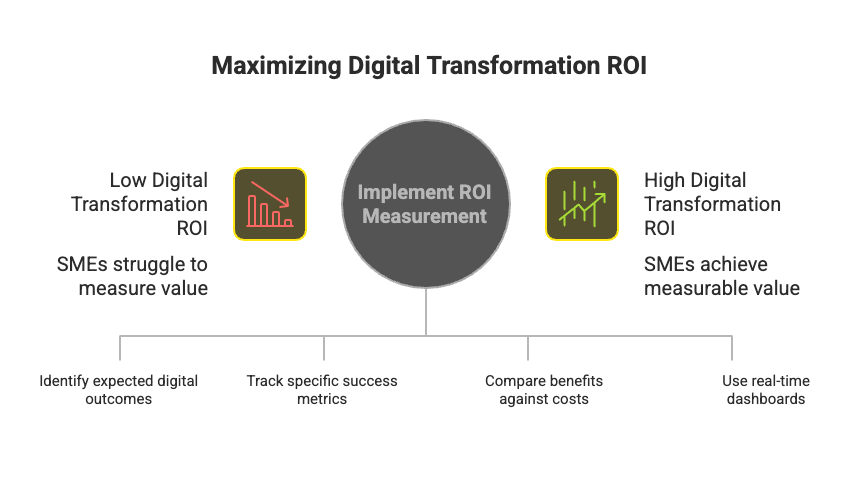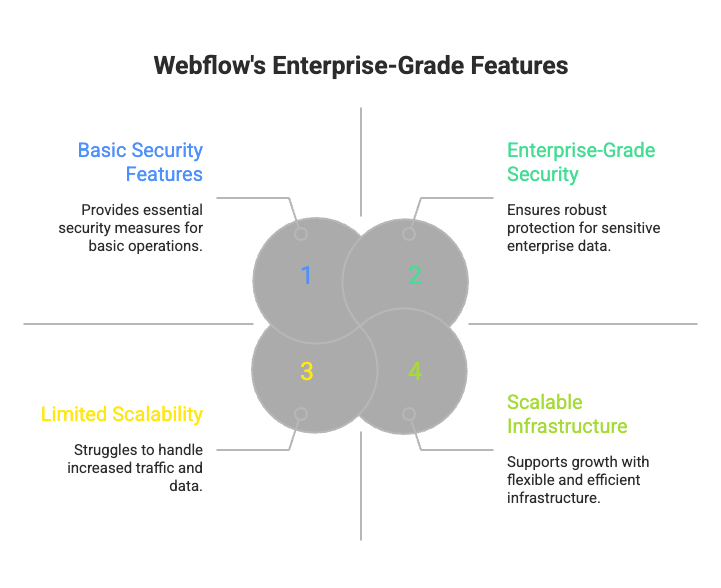In the fast-paced digital world, having a website is no longer optional—it’s a necessity. From startups to enterprises, businesses in Hong Kong and the Asia-Pacific region rely on their online presence to engage customers, build trust, and drive growth. For many, website templates seem like a quick, cost-effective solution to get online fast.
While templates may offer convenience, they come with significant limitations that can hinder growth, scalability, and brand identity. As businesses scale, these drawbacks often necessitate a shift to custom website solutions that offer greater flexibility, functionality, and longevity.
At RMD HK, we help businesses transition from template-based websites to custom-built digital solutions that align with their long-term goals. In this blog, we’ll explore the disadvantages of website templates, explain why custom websites are a superior choice, and provide actionable tips to make the transition seamless.
Why Do Businesses Choose Website Templates?
Before we dive into the disadvantages, let’s acknowledge why website templates are so popular:
- Affordability: Templates are usually inexpensive, making them appealing to startups or small businesses with tight budgets.
- Speed: Templates allow businesses to launch a website quickly without the need for extensive development.
- Ease of Use: Platforms like WordPress, Wix, and Shopify offer templates that are user-friendly, even for non-technical users.
While these benefits may seem compelling, they often come at a cost—one that becomes apparent as businesses grow and their needs evolve.
The Disadvantages of Using Website Templates
1. Limited Customization
Templates are built for mass use, meaning they are designed to cater to a wide range of industries and needs. This lack of specificity often results in websites that look generic and fail to capture the unique essence of a brand.
Key Issues:
- Restricted Layouts: Templates often have fixed layouts that cannot be modified, limiting creativity.
- Brand Inconsistency: It’s challenging to align a template’s design with your brand’s identity, especially if your brand demands a unique aesthetic.
- Functionality Constraints: Many templates lack advanced features or require costly plugins that may not work seamlessly together.
Example: A Hong Kong-based fashion retailer using a generic e-commerce template may struggle to incorporate custom branding elements, such as unique typography or animations, resulting in a website that doesn’t stand out from competitors.
2. Poor Scalability
Templates are often not built with scalability in mind. As businesses grow and require more advanced features, they may find that their template-based website cannot support new functionalities.
Scalability Challenges:
- Limited Integration Options: Templates may not support integrations with third-party tools like CRMs or inventory management systems.
- Performance Issues: Templates often include unnecessary code or features that slow down the website, especially as traffic increases.
- E-Commerce Limitations: For businesses expanding their online stores, templates may lack the flexibility needed for custom product pages or advanced checkout experiences.
Example: A logistics company in Hong Kong that initially used a template for basic website needs may struggle to integrate tracking tools or customer portals as their operations expand.
3. SEO and Performance Issues
Website templates are often built with generic code that isn’t optimized for performance or search engine rankings. This can hinder your website’s ability to attract organic traffic and deliver a fast, seamless user experience.
Common Problems:
- Bloated Code: Templates often include unnecessary scripts and features, leading to slower load times.
- Lack of SEO Customization: Templates may not allow for advanced SEO optimizations, such as custom meta tags, schema markup, or canonical URLs.
- Mobile Responsiveness: While many templates claim to be mobile-friendly, they often fail to deliver a seamless experience across devices.
Data Insight: According to Google, 53% of mobile users abandon a site that takes longer than 3 seconds to load. Template-based websites often fall short of this benchmark.
4. Security Vulnerabilities
Templates are widely used, making them a common target for cyberattacks. Hackers often exploit known vulnerabilities in template code, putting your website and customer data at risk.
Security Risks:
- Outdated Plugins: Many templates rely on plugins that may not receive regular updates, creating security gaps.
- Shared Codebases: Since templates are mass-produced, a vulnerability in one site can expose all sites using the same template.
- Limited Support: With templates, businesses often lack access to dedicated technical support for addressing security issues.
Example: A Hong Kong financial services firm using a popular WordPress template faced a data breach due to outdated plugins, resulting in reputational damage and financial loss.
5. Lack of Uniqueness
In a competitive market like Hong Kong, where differentiation is key, using a template can make your website look similar to countless others. This lack of uniqueness can dilute your brand identity and make it harder to establish trust with your audience.
Why Custom Websites Are a Better Solution
Custom websites eliminate the limitations of templates by offering full control over design, functionality, and scalability. Here’s why they are essential for businesses undergoing digital transformation:
1. Tailored to Your Brand
Custom websites are built from the ground up to reflect your brand’s identity, ensuring consistency across all touchpoints.
Benefits:
- Unique Design: Stand out from competitors with a design tailored to your business.
- Enhanced User Experience (UX): Create intuitive navigation and interactive elements that resonate with your audience.
Example: At RMD HK, we helped a Hong Kong hospitality brand design a custom website that showcased its luxury offerings through interactive elements, resulting in a 25% increase in direct bookings.
2. Built for Scalability
Custom websites grow with your business, allowing you to add new features, integrations, and capabilities as needed.
Scalability Features:
- Flexible Architecture: Easily integrate tools like CRMs, inventory management systems, and analytics platforms.
- Advanced E-Commerce: Create custom product pages, dynamic pricing, and personalized checkout experiences.
- Future-Proofing: Designed to adapt to emerging technologies and market trends.
3. Optimized for Performance and SEO
Custom websites are built with clean, efficient code and optimized for speed, ensuring better performance and higher search engine rankings.
SEO and Performance Benefits:
- Faster Load Times: Minimize bounce rates and improve user satisfaction.
- Custom SEO Strategies: Implement advanced SEO practices, such as schema markup and optimized meta tags.
- Responsive Design: Ensure a seamless experience across all devices.
4. Enhanced Security
Custom websites are designed with security in mind, using best practices to protect your data and users.
Security Features:
- Regular Updates: Ensure your website stays secure with ongoing maintenance.
- Custom Code: Reduce vulnerabilities by avoiding shared codebases.
- Dedicated Support: Access technical support to address security concerns quickly.
Real-World Case Study: Transitioning from Templates to Custom Solutions
Client: A mid-sized e-commerce business in Hong Kong.
Challenge: The company’s template-based website was slow, difficult to scale, and lacked advanced e-commerce features.
Solution:
- Designed a custom website using Webflow, focusing on scalability and performance.
- Integrated advanced e-commerce features, including dynamic pricing and personalized product recommendations.
- Optimized for SEO and mobile responsiveness.
Outcome: - 40% increase in online sales within six months.
- 30% faster load times, improving user retention.
- Seamless integration with the company’s CRM and inventory management system.
FAQs: Templates vs. Custom Websites
Why are templates not ideal for growing businesses?
Templates are limited in customization, scalability, and functionality, making them unsuitable for businesses looking to expand and differentiate themselves.
How much does a custom website cost?
The cost of a custom website varies depending on complexity, but the investment typically pays off through improved performance, scalability, and ROI.
Can I customize a template to meet my needs?
While some templates offer limited customization, they rarely provide the flexibility needed for advanced features or unique branding.
Why Choose RMD HK for Custom Website Solutions?
At RMD HK, we specialize in creating low-code and high-code solutions tailored to the needs of businesses in Hong Kong and the APAC region.
What We Offer:
- Custom Website Design: Build unique, scalable websites that align with your brand and goals.
- Seamless Integrations: Connect your website with CRMs, payment gateways, and other tools.
- Future-Proof Solutions: Ensure your website evolves with your business and market trends.
- Regional Expertise: With deep knowledge of the Hong Kong business ecosystem, we design solutions that resonate with local audiences.
Final Thoughts
While website templates may seem like a quick and affordable solution, their limitations often outweigh their benefits as businesses grow. Custom websites offer the flexibility, scalability, and performance needed to thrive in a competitive market like Hong Kong.




